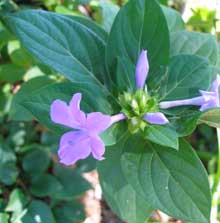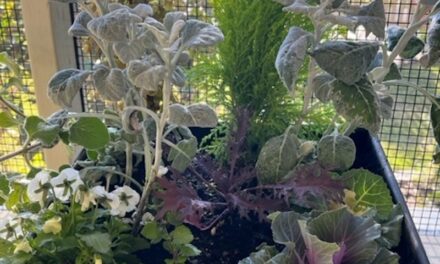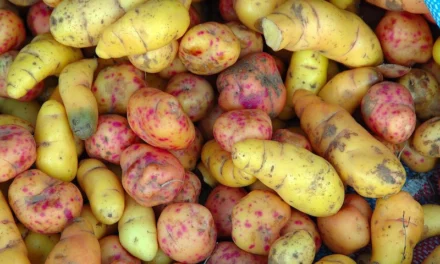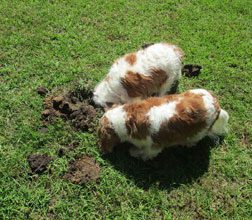 Back in the early 1940’s, Elizabeth Lawrence wrote “My Southern Garden,” a classic that is as timely today as ever. She wrote that “In the South the progress of the season does not follow the accepted pattern of spring, summer, fall and winter. Spring, when spring should come, has already been with us at intervals throughout the winter. Summer lasts into fall and fall into winter. The garden year has no beginning and no end.”
Back in the early 1940’s, Elizabeth Lawrence wrote “My Southern Garden,” a classic that is as timely today as ever. She wrote that “In the South the progress of the season does not follow the accepted pattern of spring, summer, fall and winter. Spring, when spring should come, has already been with us at intervals throughout the winter. Summer lasts into fall and fall into winter. The garden year has no beginning and no end.”
What an appropriate quote for this year. Spring came early this year and stayed around much longer than one would expect. For once I had no complaints about the weather; we even had plentiful rainfall. I loved it and stayed outside for hours pinching, digging, composting and just looking at all the new growth.
However, once the heat arrived I limited my gardening to a few hours early in the day. Over the years I have acquired many flowering perennials which, while lovely in flower, do take some attention and they can look rather pitiful in between flushes. Old fashioned flowering shrubs, however, require minimum care and provide the needed color during those days when you would prefer to be relaxing on the porch with a glass of lemonade rather than on your knees digging in the garden. I am incorporating more of these gems at home; you might want to also.
A favorite is a pale yellow flowered Cestrum parqui, this gem with its willow shaped leaves is evergreen, stays in bloom for at least 8 months of the year, is pest free and easily maintained. When mine gets too tall for its spot I just give it a trim in the spring. I have never fertilized it and it still performs beautifully. An underused native, Cyrilla racemiflora or Titi, is a shrub that stays covered with small white flowers in early summer. They contrast nicely with the dark green leathery evergreen leaves. Michael Dirr in his “Dirr’s Trees and Shrubs for Warm Climates” says this one is good for “wild areas” – just something to keep in mind.
A newer hybrid of our native coral bean, Erythrina bidwillii, is larger and much showier with huge panicles of brilliant red flowers most of the summer. Hummingbirds constantly hover around this stunner. It is deciduous, losing most of its leaves in winter, but for the size and color of the flowers alone, this one is worth growing. It prefers a bright, well-drained site. To me, the scent of a gardenia just says – shouts actually – “it’s summer in the South.” Did you know there are more than 250 varieties of gardenias? While most bloom early in the summer, with a few sporadic flowers during the summer, newer varieties bloom later in the season with more regularity. One of mine, Gardenia vietnamenses, stays in flower most of the summer. This one is also more tolerant of white flies, normally a nemesis of the gardenias.
Abutilons or Flowering Maples are easy to grow. These “cousins” of the hibiscus come in varieties of all sizes and colors. Speaking of Hibiscus, Plant Delights Nursery listed more than 27 varieties of hardy ones on their website last week. These colorful deciduous shrubs stay in bloom most of the summer and some are positively flower floozies, with neon colored blooms 12″ in diameter. Something so showy needs a special location so it does not overpower neighboring plants.
Other suggestions include the blue purple Barlerea cristata or Philippine Violet; Edgworthia papyrifera for a shady spot; Grevillea rosmarinifolia, which prefers sun and is highly drought tolerant; the Punicas (pomegranites,) with their bright orangy flowers, there are dwarf varieties available that stay under 4′. A very dainty shrub that stays in flower almost constantly is Serissa foetida, with its tiny pink or white flowers on an attractive, easily maintained evergreen plant. It can be a specimen plant or good filler in the border.
Now that the hot weather has arrived, I am thankful for those plants that provide color and interest with minimal care. Think about where you could use flowering shrubs in your garden.
To-Do’s this month include:
• Staking any tall plants to protect them from winds.
• Feed annuals unless you incorporated a slow release fertilizer when you planted them. Our soils have adequate phosphorus; look for a fertilizer with a low middle number such as 12-4-8.
• Amaryllis have finished blooming. Apply a bulb fertilizer now and do not cut back the foliage. Let it build strength for next year.
• To help eliminate mosquitoes, check your property carefully for anything, like a flower pot saucer, that might catch water and become a breeding ground.
• Don’t forget to stop by the Extension Master Gardener booths at the Farmer’s Markets with your gardening questions. The award winning Lunch & Learn classes continue at the Port Royal Market on Saturdays at noon. See you there.
• Be sure to visit the Beaufort Garden Club’s “Garden A Day” gardens.







